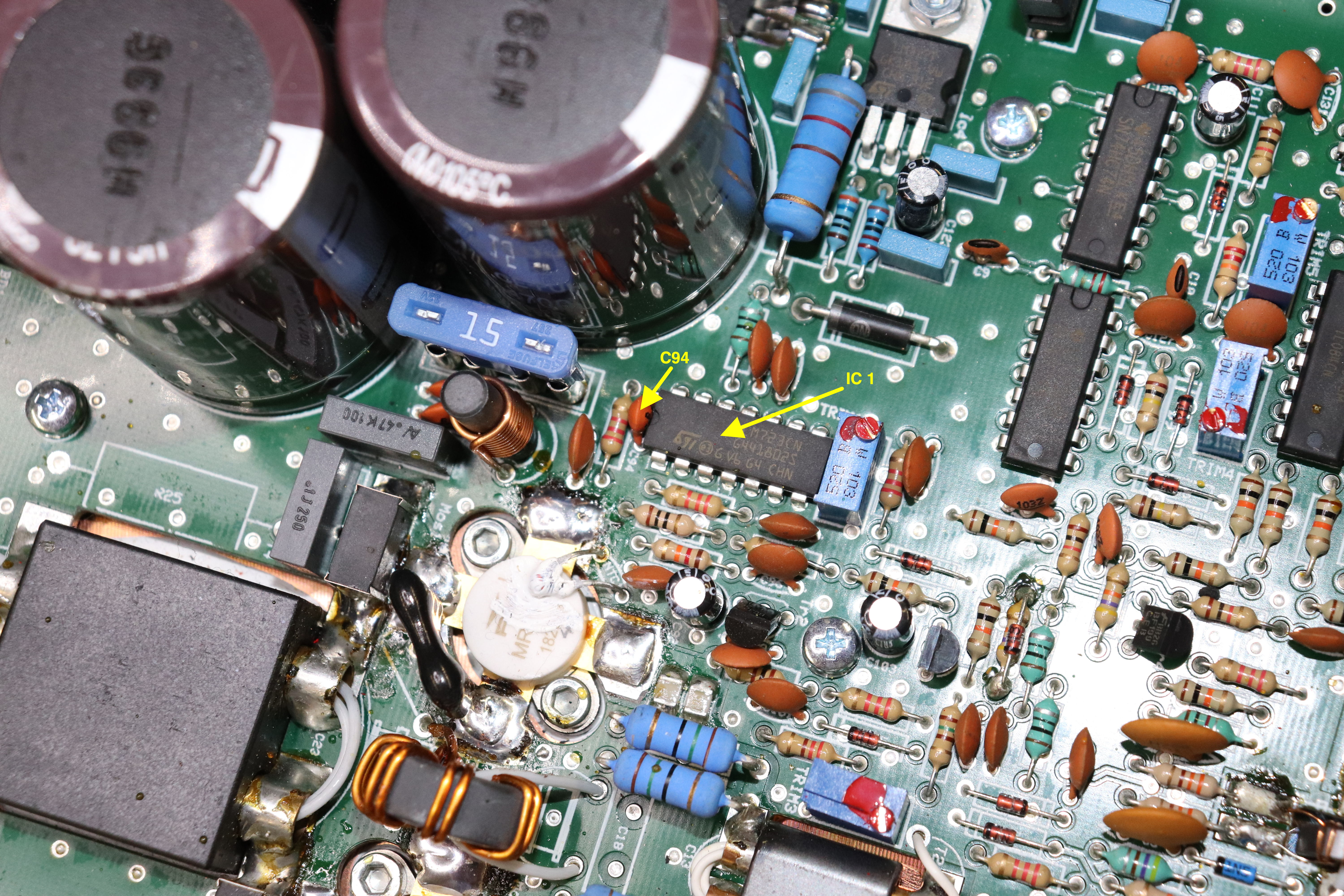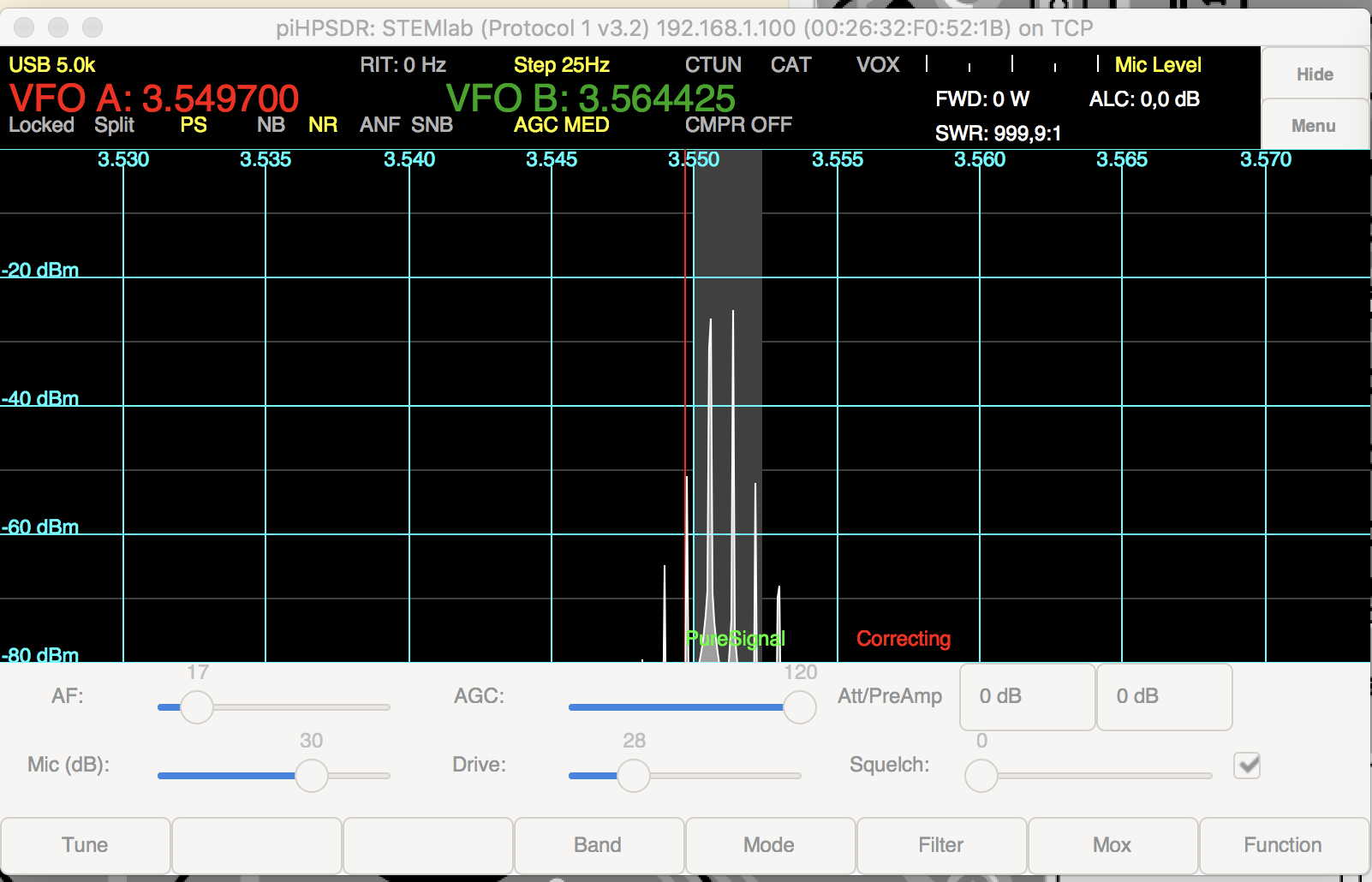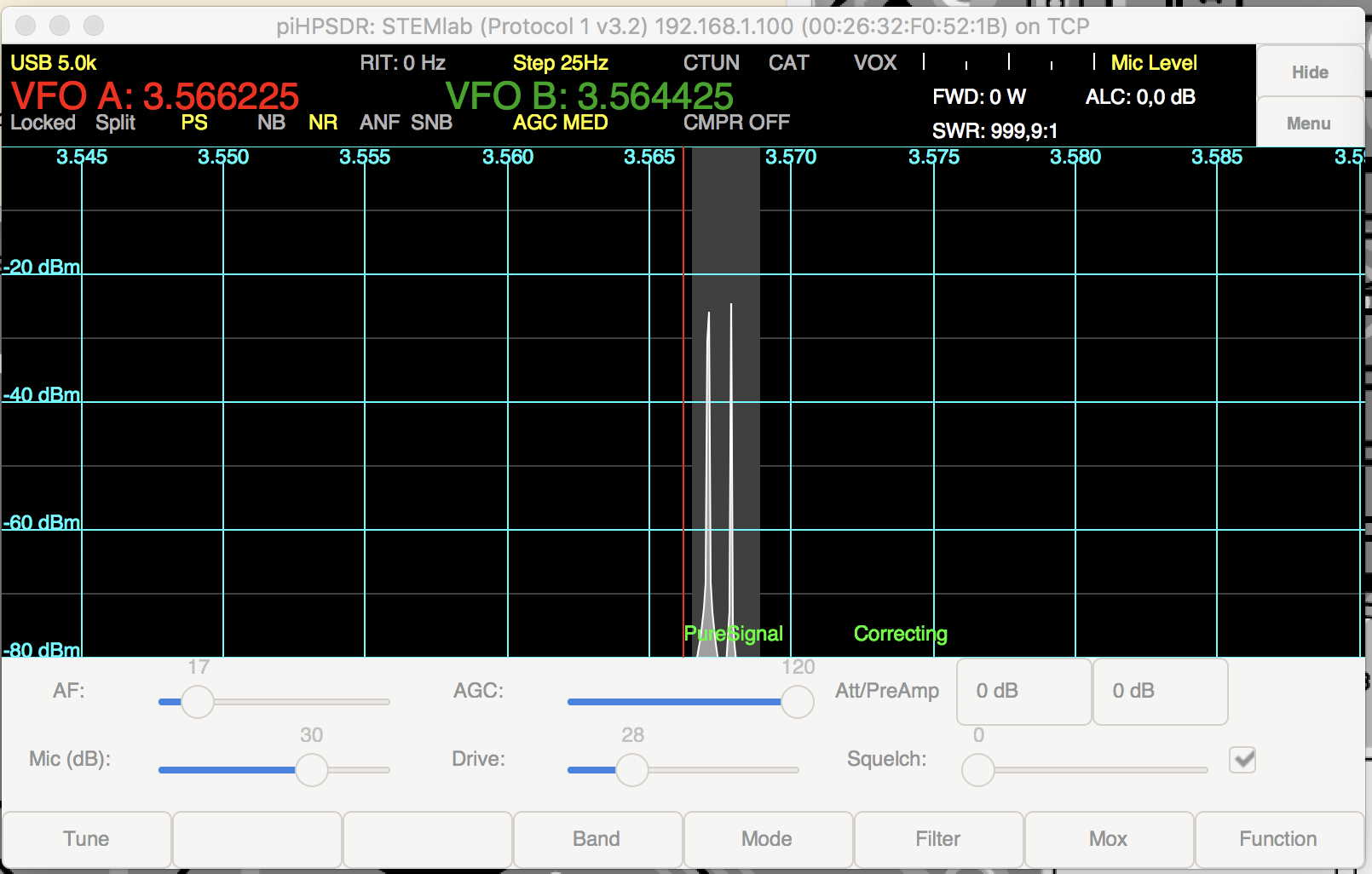When I looked with a spectrum analyzer at the output of my BLA 350 linear power amplifier, it looked like this for a single-tone signal (7 MHz, 2 Watt drive):

These two side bands were present on all bands, their distance from the main peak varied a bit but were mostly in the range 6 to 7 kHz. It looks like there is a little bit "amplitude modulation" on the signal. Since the source-drain supply voltage is a conventional (linear) design and I do not see how a 7 kHz ripple can occur there, the generation of the gate (bias) voltage came into the focus.
This problem was solved with much help from the manufacturer (RMI, tnx Andrew). There is a voltage regulator (IC 1, an LM723) in the circuit which has a compensating capacitor (C94, 1 nF) that connects pin 4 ("frequency compensation") and 13 ("inverting input") of this IC. For copyright reasons, the schematic cannot be reproduced here, but the following picture shows the IC on the board, C94 can be seen at its left narrow edge). The voltage regulator is placed near the finals. This picture is provided with high resolution, you can enlarge or download it:

Enlarging capacitor C94 solves the problem. The value is not that critical, go up to 10 nF and you are on the safe side. I find it not so easy to un-solder C94 and replace it, so I just took a 10 nF capacitor and soldered it on-top of IC1, bridging pins 4 and 13, as shown in the next picture (don't mind that the compensating capacitance now is 11 nF):

It is admitted that the side bands were not too strong (about 40 dB below the main signal), but this is strong enough to drive the PURESIGNAL algorithm (adaptive pre-distortion) of my SDR program crazy. After the modification, when the side bands were gone, PURESIGNAL could correct the combined IM3 of driver/PA from about -28 dBc (first picture, no PURESIGNAL) to better than -50 dBc (second picture, with PURESIGNAL), as shown by the two screen-shots from the piHPSDR program. The drive was about 3 Watt in both cases. For more on PURESIGNAL and piHPSDR, see the other topics on my web page.


DL1YCF, January 2020